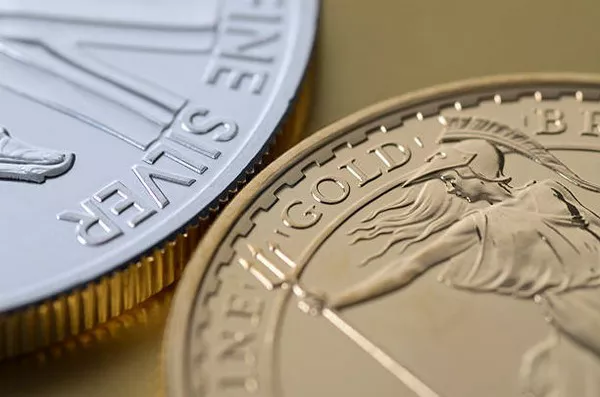Investing in precious metals has long been a popular choice for investors looking to diversify their portfolios and hedge against economic uncertainties. Among these precious metals, silver stands out as an attractive option due to its unique properties and industrial applications. Silver exchange-traded funds (ETFs) have emerged as a convenient and accessible way for investors to gain exposure to the silver market. In this comprehensive guide, we will delve into the workings of silver ETFs, exploring how they operate, their benefits, and potential drawbacks.
What is a Silver ETF?
A silver ETF is an investment fund that holds physical silver or silver futures contracts and offers shares to investors. These shares are traded on stock exchanges, making them easily accessible to individual and institutional investors alike. The primary objective of a silver ETF is to track the performance of the silver market, providing investors with a way to gain exposure to the price movements of this precious metal without physically owning or storing it.
How Silver ETFs Work
Physical Silver ETFs:
Silver Bullion Acquisition: Physical silver ETFs hold physical silver bars or coins in secure vaults. The ETF provider acquires these assets on behalf of investors.
Creation and Redemption: To create new shares of the ETF, an authorized participant (typically a large financial institution) delivers a specified amount of physical silver to the ETF issuer. In return, the issuer issues new ETF shares to the authorized participant. Conversely, when an investor wants to redeem their shares, they can exchange them for the equivalent amount of physical silver.
Tracking Index: Most physical silver ETFs aim to track the performance of a specific silver price index, such as the London Silver Fix or the COMEX Silver Futures index. The ETF’s net asset value (NAV) closely mirrors the index’s movements.
Transparent Pricing: The market price of a physical silver ETF’s shares is determined by supply and demand factors and typically closely follows the NAV of the fund. This transparent pricing ensures that investors receive a fair market price when buying or selling shares.
Silver Futures ETFs:
Futures Contracts: Silver futures ETFs invest in silver futures contracts rather than physical silver. These contracts obligate the ETF to buy or sell silver at a predetermined price and date.
Rolling Contracts: Since futures contracts have expiration dates, silver futures ETFs must periodically “roll” their positions by selling expiring contracts and buying new ones. This process can impact the fund’s returns, especially in a contango or backwardation market.
Tracking Error: Silver futures ETFs may experience tracking error, where the ETF’s performance deviates slightly from the actual silver price due to factors like contract rolling costs and market conditions.
Advantages of Investing in Silver ETFs
Liquidity: Silver ETFs are traded on stock exchanges, providing investors with high liquidity. This means you can buy or sell shares at any time during market hours at prevailing market prices.
Diversification: Investing in a silver ETF allows you to diversify your portfolio, reducing the risk associated with holding individual silver assets.
Cost-Effective: Investing in physical silver involves storage, insurance, and security costs. Silver ETFs eliminate these expenses, making them a cost-effective way to gain exposure to silver.
Transparency: The NAV of a silver ETF is calculated daily and is readily available to investors, ensuring transparency in pricing.
Flexibility: Investors can buy and sell silver ETF shares in the same way as stocks, providing flexibility in managing their investment positions.
Tax Efficiency: Silver ETFs may offer tax advantages compared to owning physical silver, as capital gains taxes can be more favorable for ETF investments.
Drawbacks and Considerations
While silver ETFs offer numerous advantages, there are some drawbacks and considerations to keep in mind:
Tracking Error: Silver futures ETFs can experience tracking error, which means their returns may not precisely mirror the price movements of silver due to various factors.
Counterparty Risk: For futures-based ETFs, there is a counterparty risk associated with the futures contracts’ counterparties. This risk is not present in physical silver ETFs.
Management Fees: ETFs charge management fees, which can erode returns over time. It’s important to compare these fees when selecting a silver ETF.
Taxation: Tax treatment may vary depending on your jurisdiction and the type of silver ETF you invest in. Consult a tax advisor for guidance on tax implications.
Market Conditions: The performance of silver ETFs is influenced by market conditions, including supply and demand dynamics, interest rates, and geopolitical events.
Storage Costs: While physical silver ETFs eliminate the need for personal storage, they pass on storage costs to investors through management fees.
Conclusion
Silver ETFs offer an accessible and convenient way for investors to gain exposure to the silver market, whether through physical silver holdings or silver futures contracts. They provide liquidity, diversification, and cost-effectiveness, making them an attractive option for those looking to invest in precious metals without the logistical challenges of owning physical silver.
However, investors should carefully consider the type of silver ETF that best aligns with their investment goals and risk tolerance. It’s essential to understand the potential drawbacks, such as tracking error and management fees, and to stay informed about market conditions that can impact the performance of silver ETFs. Overall, silver ETFs can be a valuable addition to a diversified investment portfolio, offering exposure to the dynamic world of silver investing.


